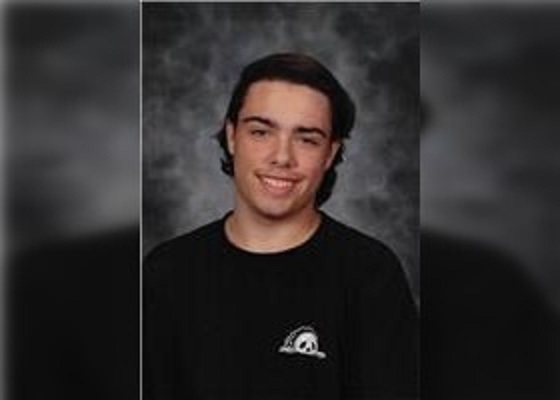Officer who killed Quebec teen who was holding weapon said police were patient

Posted June 15, 2022 11:12 am.
Last Updated June 15, 2022 6:51 pm.
The provincial police officer who shot and killed a Quebec teenager who was holding an air pistol testified on Wednesday that he had little choice but to shoot because the young man posed a clear danger to officers.
Joel Desruisseaux told a coroner’s inquest investigating the death of Riley Fairholm that a fellow officer repeatedly asked the teen to put down the weapon and that there were no signs the young man would listen.
“There was a danger,” Desruisseaux said. “We had a fear for our colleagues and our own lives; the adrenalin was at maximum. There was no de-escalation. From the moment I put my foot on the asphalt, he was already agitated. He was pointing his gun everywhere and didn’t stop.”
BACKGROUND: Quebec coroner investigates case of teen shot dead by provincial police in 2018
The interaction between Fairholm, 17, and officers in the early morning of July 25, 2018, lasted a little over one minute before Desruisseaux shot the teenager in the head in the parking lot of an abandoned restaurant in Lac-Brome, Que., about an hour southeast of Montreal.
Quebec’s independent police watchdog – the Bureau des enquetes independantes – investigated the shooting, and the Crown decided not to lay charges. Fairholm’s family has been critical of the police and the oversight agency for not being transparent.
The inquiry has heard that police did not know Fairholm left a suicide note with his parents or that he had called 911 on himself.
Desruisseaux said responding officers also did not know the weapon in Fairholm’s possession was an air pistol and thought it was a handgun. A senior officer at the scene, Sgt. Wallace McGovern, has testified that he told Fairholm to drop his weapon and that everything would be alright.
Desruisseaux said, “I believe that we were patient in the sense that we tried to defuse; we tried to repeat (commands) even if we were threatened from the beginning and could have been fatally shot at any time.”
All six officers who intervened that night have told the inquiry that Fairholm was moving erratically, yelling and waving around the weapon in a sweeping motion but never pointing directly at any officer.
Some of the officers said they heard Fairholm say, “I planned this for five years.” They said the teenager kept yelling up until he was shot.
Coroner Gehane Kamel expressed skepticism several times Wednesday that police witnesses all seemed to have heard him utter that one sentence but didn’t hear virtually anything else he might have said.
“You hear him screaming but you don’t know what he said?” Kamel quizzed Claude Charest, Desruisseaux’s partner. “So he could have said, `help me,’ and no one would have heard it?”
She said the testimony has indicated the situation was tense and urgent, which she said was normal given the presence of a weapon. But Kamel said the officers didn’t attempt to appease Fairholm or calm him down.
The officers testified that they feared for their safety and that the possibility that Fairholm was suicidal did not enter into their minds.
Both Desruisseaux and Charest told the inquiry on Wednesday they were ready to shoot. Desruisseaux estimated that 15 to 20 seconds had elapsed between when he aimed at the teenager and when he fired the shot, adding that the parking lot was dimly lit and Fairholm was wearing dark clothing.
Charest testified he was also ready to open fire but his partner did first. He told the inquiry he didn’t see another outcome to what officers qualified as a high-risk intervention.
“If there had been surrender, if he had dropped his weapon and followed the instructions, it would have ended,” Charest said. “In the present case, after the order was given, there was no change in the behaviour.”
Guillaume Marion, one of the six officers who was at the scene, testified Wednesday that many of the details only emerged after the fact, including that Fairholm was a teenager.
“We didn’t know that he had called (911) for himself,” Marion said. “We didn’t know that he had left a suicide note _ that was information we didn’t have. Everything happened fast.”
He also contradicted the testimony of a fellow officer, Genevieve Racine. On Tuesday, Racine said Marion found a pulse on Fairholm and therefore chose not to conduct CPR. On Wednesday, Marion testified that he never found a pulse on the teenager and concluded that given the head injury, the teenager was dead.
An ambulance technician, Brandon Rodrigue, told the inquiry on Wednesday he didn’t find a pulse on Fairholm either when he arrived at the scene or while transporting Fairholm to the hospital.
Rodrigue said the teenager was bleeding from his head and wasn’t breathing. He said he asked a first responder on site to begin a cardiac massage. Rodrigue said in his opinion, given the injury, it was unlikely starting CPR earlier would have changed the outcome.
“Could we have saved him? I don’t think so,” Rodrigue said.








